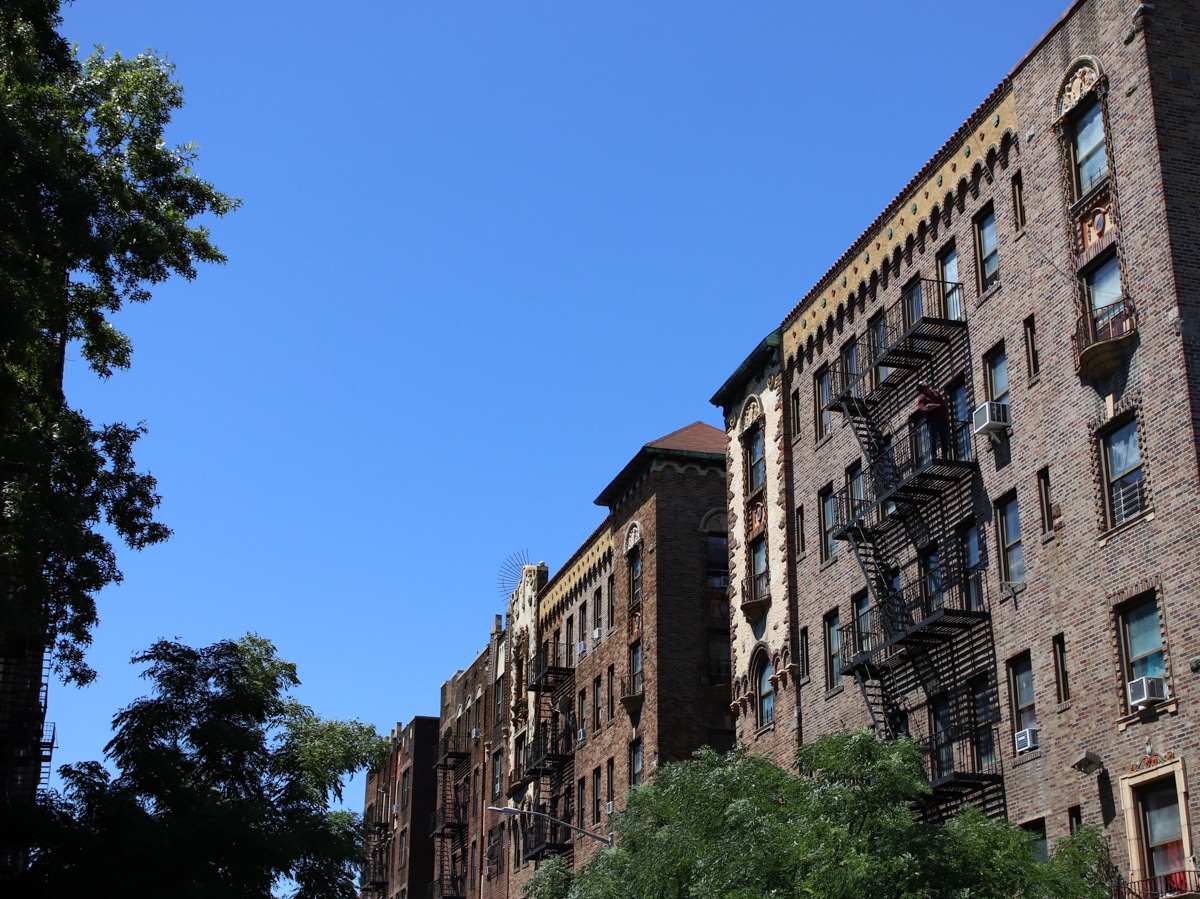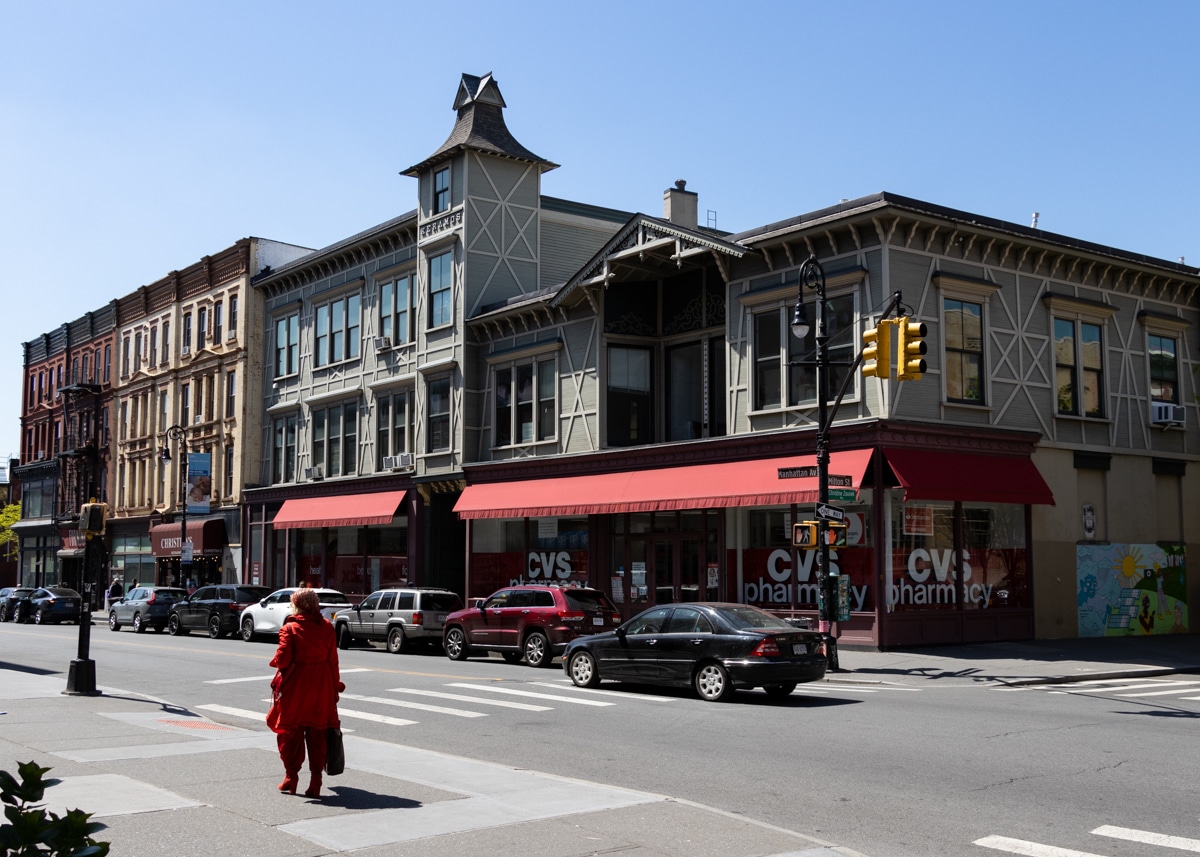Building of the Day: 241-243 Hancock Street
Brooklyn, one building at a time. Name: Row houses Address: 241-243 Hancock Street Cross Streets: Marcy and Tompkins Avenues Neighborhood: Bedford Stuyvesant Year Built: 1891-92 Architectural Style: Queen Anne Architect: Frederick B. Langston Other Buildings by Architect: Similar five-story townhouses on Hancock between Nostrand and Marcy, as well as many other row houses and flats…

Brooklyn, one building at a time.
Name: Row houses
Address: 241-243 Hancock Street
Cross Streets: Marcy and Tompkins Avenues
Neighborhood: Bedford Stuyvesant
Year Built: 1891-92
Architectural Style: Queen Anne
Architect: Frederick B. Langston
Other Buildings by Architect: Similar five-story townhouses on Hancock between Nostrand and Marcy, as well as many other row houses and flats buildings by himself or with Magnus Dahlander in Bedford, Stuyvesant Heights, Crown Heights North and Park Slope
Landmarked: Calendared as Bedford Historic District, but not yet landmarked
The story: Bedford has many wonderful streets, with fine homes and gracious streetscapes, but few can argue against the fact that Hancock Street between Nostrand and Tompkins Avenues are two of the finest blocks in the neighborhood. This was Bedford’s Gold Coast, the blocks lined with exceptionally fine, large townhouses and even a couple of mansions. Hancock between Nostrand and Marcy was home to architect Frederick B. Langston, and the next block up was home to architect Montrose Morris. Both men’s presence can be strongly felt on these blocks where they designed some of their finest works, which were either commissioned or purchased by some of Brooklyn’s wealthiest people.
These two large five-story townhouses are sandwiched between Hancock Street’s two largest mansions; the Wilson J. Randolph house at 239 Hancock, designed by Peter J. Lauritzen, and the John C. Kelley house at 247 Hancock, designed by Montrose Morris. Frederick B. Langston, who lived a block away, designed these homes for a developer who was quickly able to sell them to wealthy clients who wanted to live on this exclusive block. Both houses had very rich histories.
The first owner of 241 may have been Vincent H. Lamarche. He was a prominent Brooklyn lawyer with an aristocratic Belgian pedigree. He and his brothers were among the founders of the Crescent Athletic Club, and were start football players for the team. He had a long and distinguished legal career and was also involved in several banking concerns. In 1899, he sold the house to Simon F. Rothschild.
Mr. Rothschild, a distant relative of the famous European Rothschild banking family, had been a very successful Manhattan cloak manufacturer. In 1893, he, Isador and Nathan Straus purchased Abraham and Weschler, one of Brooklyn’s finest department stores, which they renamed Abraham & Straus. Rothschild was president of the store and managing partner for many years. He was also one of Brooklyn’s biggest philanthropists and supporters of Jewish and other charities. He was president of the Hebrew Orphans Society and the Hebrew Educational Society for many years. He and his family lived here from 1899 until at least 1904.
Subsequent owners of note include Charles M. Dutcher, who lived here in the mid to late 1920s. He was a prominent banker, and at the time of his residence here, was president of the Greenwich Savings Bank in Manhattan, one of the country’s largest savings banks. Interestingly enough, Mr. Dutcher may have sold his house to one of the block’s first black residents. In 1933, this was the home of Lewis S. Flagg, Jr. and his family.
Lewis Flagg was a lawyer, one of Brooklyn’s most prominent African American attorneys. In 1933, while living here, he was up for nomination as a candidate for the United States District Attorney’s office, one of two Negro lawyers being considered for the first time for a position in that office. He would later go on to become the first black judge ever elected in Brooklyn, in 1954. By that time, he had moved to Decatur St in Stuyvesant Heights. The house has had several more owners, and today is a very generous two family home.
Next door, 243 had an equally impressive list of owners. The house’s first and longest owners were the Tag family. Casimir Tag was a very wealthy banker. He was born in Manhattan to German immigrants in 1847. His family was in the tobacco business, but he went into banking instead. He became president of Manhattan’s German American Bank, and later, the German Savings Bank, as well. He was also on the boards of several other banks, as well as several insurance companies and had a chair on the Stock Exchange.
He was a very charitable man, and gave quietly and almost anonymously to any number of charities and hospitals during his lifetime. He and his wife Hannah, and six children lived here from the 1890s through the ‘teens. Casimir died in 1913, here at home at the rather early age of 66. His funeral was here and he’s buried in Green-Wood Cemetery. The family stayed on after his death.
In 1916, the house was engulfed in one of the worst, and most tragic house fires in Brooklyn history. Six women, including two of the Tag daughters, a cousin, a nurse and two servants, died in the fire that gutted the house. Mrs. Tag was helped to the roof by one of the daughters who had gone back inside to rescue others. She never came out. Mrs. Tag was rescued by firefighters. The cause of the fire was later determined to be electrical. Mice had eaten through some wire casings, causing a short and subsequent fire. This story will be further told in an upcoming Walkabout.
After the horrible fire, Mrs. Tag and her remaining family sold the house. It was immediately purchased by H. L. Mott, who told the press he was going to renovate it and use it as a private residence. That may have been to calm the still toney neighbors, because he turned it into an apartment house, with one and two bedroom apartments. Ads appear frequently in the Eagle, beginning in 1917. It is probable that the house lost its stoop at this time, and the fire escape was added, as well. More recently, it’s long been known as the Rosa Park Apartments, and is now owned by the Project Teen Aid Housing Corporation.
These houses, the wonderful blocks of Hancock Street, and much more of the calendared Bedford Historic District will be the subject of the walking tour Morgan Munsey and I will be leading for the Municipal Arts Society. Please join us this Sunday, August 17, at 4 pm. Details and tickets are available on the MAS website. This tour usually sells out, so please act quickly. Hope to see you then.
(Photograph: S.Spellen)











I am selling one of these very soon funny you wrote about this…